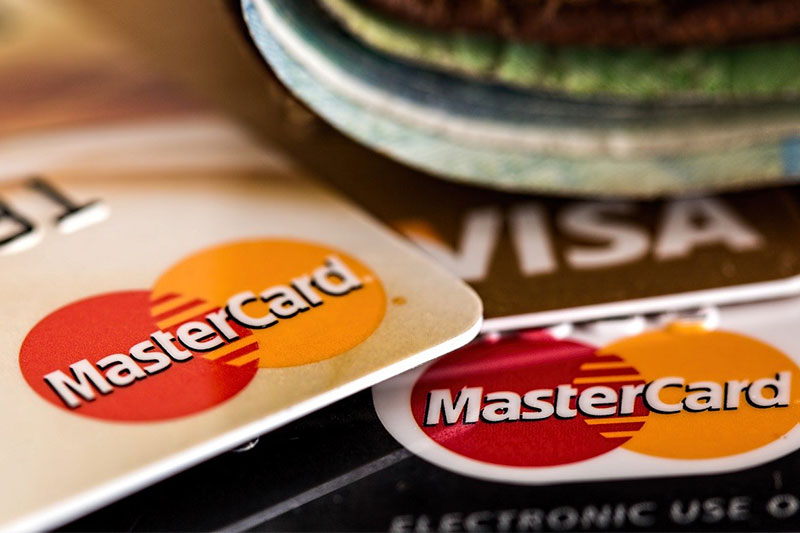Financial planning is crucial – after all, nothing is more unforgiving than our personal finances. Here are the 8 steps you should take to ensure a lifetime of financial health.
What is Financial Planning?
Financial planning is the ongoing process of responsibly and systematically managing your personal finances in order to meet short or long-term life goals. These might include buying a house, starting a business, funding your child’s education, solo-travelling across Europe, or retiring by 30.
Financial planning isn’t just for the wealthy. In fact, everyone should have a financial plan because it empowers you to take ownership of your future, rather than ‘just scraping by’. Without a roadmap, our money can often have a mind of its own, leading us astray from the aspirations we hold dear. By consistently setting aside an hour or so to evaluate your priorities, we can break them down into actionable baby steps, like opening a savings account or investing a small percentage of your paycheck. This will allow you to make giant leaps towards securing the financial freedom you’ve always dreamed of, while also cushioning against unforeseen events and risks.
You might also like our 8 FinTech apps to simplify your finances, start saving smarter, build an investment portfolio or streamline the way you organise your bills.

How to Craft a Solid Financial Plan
Since everyone’s personal situation, goals, and risk tolerance are different, no two financial plans will look exactly the same. In general, however, financial planning boils down to 8 key steps.
#1 Assess your current financial situation
In order to get where you want to go, it’s important to know where you stand with full transparency. The best way to accurately gauge your financial situation and the feasibility of your goals is by calculating your net worth. Simply minus what you owe (i.e. your liabilities, such as mortgage loans, tax bills, and credit card balances) from what you own (i.e. your assets, such as property and savings).
Net Worth = Assets (savings, investments, properties) – Liabilities (debt, student loans, credit cards, mortgages, tax)
While this might seem straightforward enough, it can get emotional quite quickly, especially for those who feel ashamed of their debt or past money mishaps. Instead of turning a blind eye or wallowing in self-pity, focus on learning from those mistakes and looking to the future.
#2 Track your monthly cash flow
Once you have your net worth, it’s time to take a closer look at your cash flow – how much you spend versus how much you earn. This will help you get a sense of your spending habits and your ‘bare-bones’ budget. An Excel spreadsheet or good old pen and paper will suffice, but there are plenty of great budgeting apps available today that can also make the process easier and more automated.
Start by gathering every financial statement you can find (bank statements, receipts, utility bills), and making a list of your day-to-day expenses. Categorise them broadly into ‘living costs’, ‘groceries’, ‘transportation’, ‘entertainment’, and so on, and work out a monthly average for each. Then, compare the total of these expenses with your monthly after-tax income. This figure is likely to fluctuate for freelancers, self-employed workers, and employees on a commission-based salary.
If the end result shows more income than expenses, you’re off to a good start and can potentially look into channelling this excess elsewhere (we’ll get to that later!). If your expenses outweigh your income, however, you’ll want to highlight any areas of non-essential spending – the ‘needs’ versus the ‘wants’. For example, you can trim or cut certain expenses entirely, like recurring memberships you don’t use or how frequently you eat out.

#3 Determine what financial freedom looks like for you and devise a forward-thinking budget plan
Now that you have a clearer understanding of your cash flow, ask yourself: ‘Am I happy with the general story of what’s coming in and going out’? If not, what would you like to spend your money on? Where do you want to be 5-10 years from now? What does ‘financial freedom’ mean to you, and what steps must you take to get there realistically? How much risk (exposure to loss) are you willing to tolerate along the way?
Based on your answers, identify several short, medium and long-term goals, and factor the costs and time horizons of each into your plan. Then, count backwards to your current age and establish financial milestones at regular intervals. Say you want to pay off your mortgage in 10 years’ time, how much money would you need to save per month to attain that, given your expected income and other goals? The more specific your goals, the higher your likelihood of achieving them.
#4 Kickstart your emergency fund
While it may seem intuitive to attack your debts first, experts advocate jumpstarting your emergency fund before all else. Why? Misfortunes can and do happen every day: your car breaks down, you get laid off, a family member suffers a serious injury. Without an emergency fund to keep you and loved ones afloat on ‘rainy days’, you risk spiralling further into debt by relying on credit cards or high-interest loans.
Having a self-insurance policy in place (on top of existing insurance covers) protects your life, your ability to earn income and keep a roof over your head, and general peace of mind. There’s no right answer to how large your emergency fund should be, but 3-6 months of living expenses is a popular recommendation.

#5 Have a debt payoff plan
With the possible exception of mortgages, there’s no such thing as ‘good’ debt – and paying it off is no easy feat either. Credit cards are typically the biggest culprits of high-interest debt, as well as auto, student, and payday loans. The longer you have them, the more damage it’ll inflict on your credit score, psychological wellbeing and ability to pursue future goals.
There are two main schools of thought on eliminating debt. Both involve paying the minimum monthly payment on all your debts to begin with.
• Debt Snowball Method: For proponents of the ‘debt snowball’ method, any leftovers should then be devoted to tackling the debt with the smallest balance first, before working your way up to the largest debt.
• According to the ‘debt avalanche’ school, however, debts should be ordered by interest rate, not balance. So, you pay off the highest interest rate debt first, before working your way down to the lowest interest rate debt on your list.
Both methods are effective, so pick whichever one makes sense for your situation.
#6 Build an investment portfolio
Let’s start thinking about how to make the money you’ve saved make more money for you in the future. Investment is the process of buying an asset with the expectation of generating a return or profit, even if it entails taking on more risk.
According to Investopedia, there are 3 types of investment: ownership investments (the most volatile and profitable type, e.g. stocks and real estate), lending investments (e.g. bonds and savings accounts), and cash equivalents (ultra-safe with relatively low reward, e.g. money market funds).
You should also consider the return on investment (ROI), a metric that determines how efficient your investment is at generating additional income. Ideally, you should have an ROI that matches or is greater than the inflation rate, which tends to be around 2-3%. Your inflation-adjusted return shows you how much real earning power your investment income has – inflation can cause your savings to depreciate. However, some investors, especially novice ones, may opt to prioritise keeping their risk level low by choosing safer investments, even if that means lower investment returns.
Always research the nature and risks of any investment offered thoroughly, and be wary of putting all your eggs in one basket. For novice investors, consider hiring professional help in the form of a financial consultant or robo-advisor.
#7 Plan for retirement
While retirement may seem like a lifetime away – the average retirement age in Asia is 60-65 years old – it’s never too early to start saving and leveraging the power of compound interest. In your 20s and 30s, time is on your side, so stop waiting for a promotion or for more ‘wiggle room’ in your budget. Many brokerages offer no-minimum, no-fee retirement accounts for individuals to make automatic (and potentially tax-deductible) deposits each month. Additionally, take advantage of employer matching contributions or government-sponsored pension schemes.

#8 Revise, stay on course and learn from your mistakes
Congratulations, you now have a financial plan! But, just as physical fitness requires consistency and patience, so does financial fitness. Building your ‘money muscles’ takes time, so it’s important to check-in every 6-12 months and make adjustments when your goals or circumstances inevitably change. Perhaps your emergency fund needs topping up or your risk tolerance decreases with the birth of a child.
Remember, also, that your journey to financial freedom won’t always be smooth-sailing, especially when delayed gratification is key. You’ll still make mistakes or splurge on things you probably don’t need – and that’s okay. Financial planning is not about beating yourself up, but rather, learning from those mistakes and taking them into your stride.
Related Articles
A Beginner’s Guide to a Furlough – and What to Do Next





